Below, you’ll find a table summarizing each cured meat and details on how to store it. Here are the general tips.
Storage Tips:
- Keep whole dry-cured meats in their whole form for longer preservation.
- Store sliced dry cured meats in an airtight container to minimize exposure to oxygen.
- Check packages for expiration dates and use them within recommended timeframes once opened.
- Use refrigeration for sliced or opened meats to maintain freshness and prevent spoilage.
Cured meat is a big category, and what you need to keep in the fridge depends on whether it’s cured meat or charcuterie.
I love charcuterie (link to charcuterie/dry cured meats category list on this site) and cured meats in all their variations. Below is a quick answer with a table and a bit more detailed answer for each meat below to help also.
| Meat Product | Needs Refrigeration |
| Dry Cured Cold Smoked Meat – Packaged/Cut | Yes |
| Dehydrated Biltong/Jerky | Either |
| Hot Smoked Meat ie. Bacon, Chicken, Fish | Yes |
| Cut Salumi, ie. Prosciutto, Parma, Lonza | No |
| Dry Cured Fermented Salami | Either |
| Dry Cured Whole Muscle Salumi ie Prosciutto, Parma | No |
| Pate/Rillettes/Confit i.e. fat preservation | Yes |
| Pate/Rillettes/Confit ie. fat preservation | Yes |
| Dry Cured Cold Smoked Meat-Whole/Homemade | Yes |
I will also touch on how I have found it best to store cured meat to keep the flavor freshest.
If it is still in a whole-muscle piece of cured meat, it will not get as much oxygen on the surface, which can slow down the process of deterioration or drying out.
If it has been sliced and is in the package, then you can just go by the dates. However, in many European delis, you won’t get any expiry dates—1 week for cooked produced, 2 weeks for dry-cured.
Many packages have had the air removed (vacpacked), are often good for 2-4 weeks, if un-opened.
From the store—sliced cured meat, hot or cold smoked meat—once the package is opened, it will start to perish the more air/oxygen is around it.
Tip when buying salami: If you buy your dry-cured salami whole, you can dry it to your taste preference, and it will also last a lot longer in its whole state.
Most Parma ham, prosciutto, braesola, lonza (dry-cured, therefore preserved), and other salumi or cured meat are already sliced when you buy them from the deli. Consequently, they will last a week or two but dry out when cut and exposed.
If it’s whole salumi, it only needs to be kept at a cool temperature and can generally tolerate up to 18-20°C/64-68°F; because it has been inhibited with salt and dried out, it isn’t a suitable environment for harmful bacteria to grow. Hence, it has been ‘preserved.’ But generally, I will keep it in the fridge if it’s vac-packed.
To help, here are the explanations of each type of cured meat and its storage lifetime.
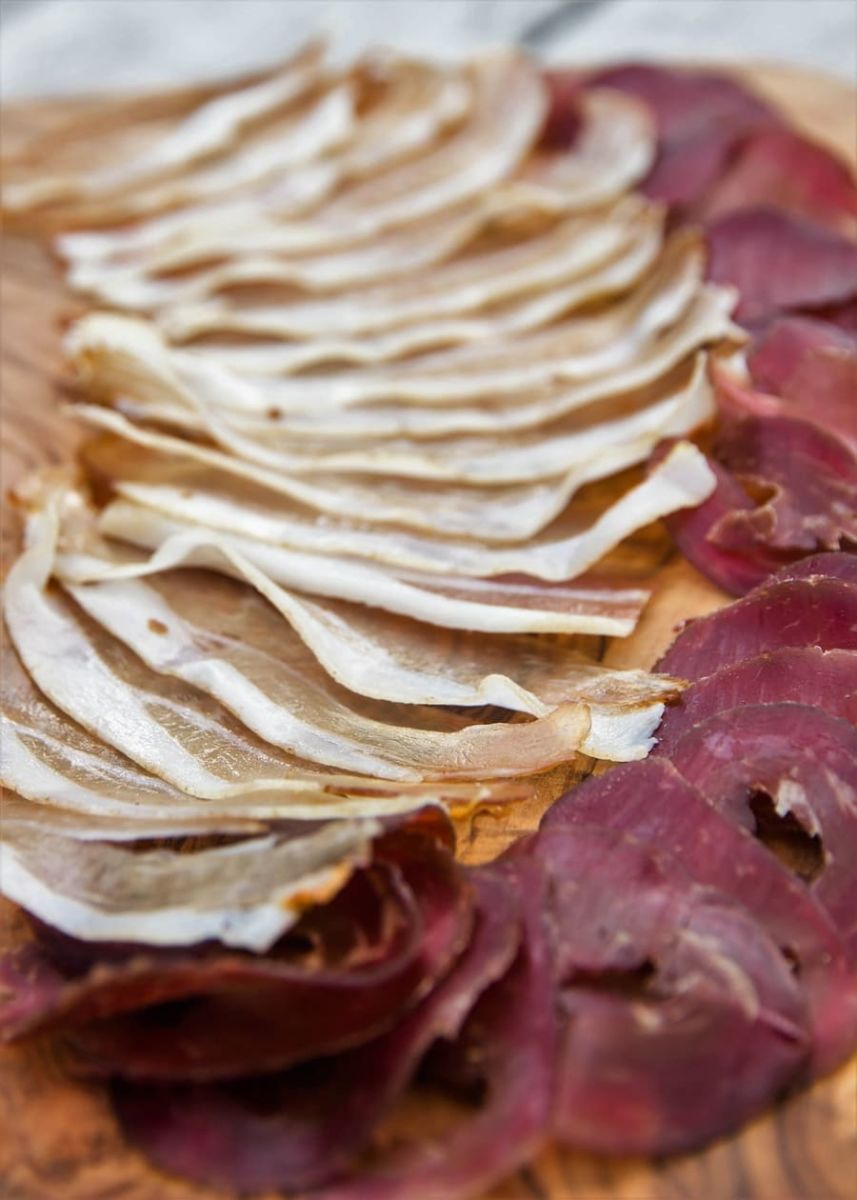
Refrigerating Different Charcuterie and Cured Meats
Cold Smoked Meat – Packaged/Cut
Refrigerate? Yes

When you buy cold smoked (cold smoking or charcuterie flavors; I wrote about how they taste) salmon/bacon, it has been cured with salt and dried to a certain level through a set drying area / cold smoking in conditions under 30°C has also been performed. Ideally, in a much cooler environment
But if it is sliced, then it’s exposed to the environment more, so it has to be kept in the package, which has had the air/oxygen sucked out of it.
Many people don’t know that cold smoking is just another form of drying with some smoke. Smoke has certain beneficial properties that help preserve meat effectively.
The salt curing at the start removes some moisture and makes the environment inhospitable for bacteria that spoil the meat.
Anyway, once the meat has been sliced, it will deteriorate once you open the packaging since all that oxygen can easily cover the surface. Keeping it in a sealed container helps, but it usually starts to go off five days after opening the package (just read the package).
Cold Smoked Meat-Whole/Homemade
Refrigerate? Yes – or kept in a cool place
If you are lucky enough to make or buy whole cold-smoked chunks or muscles of meat like this,
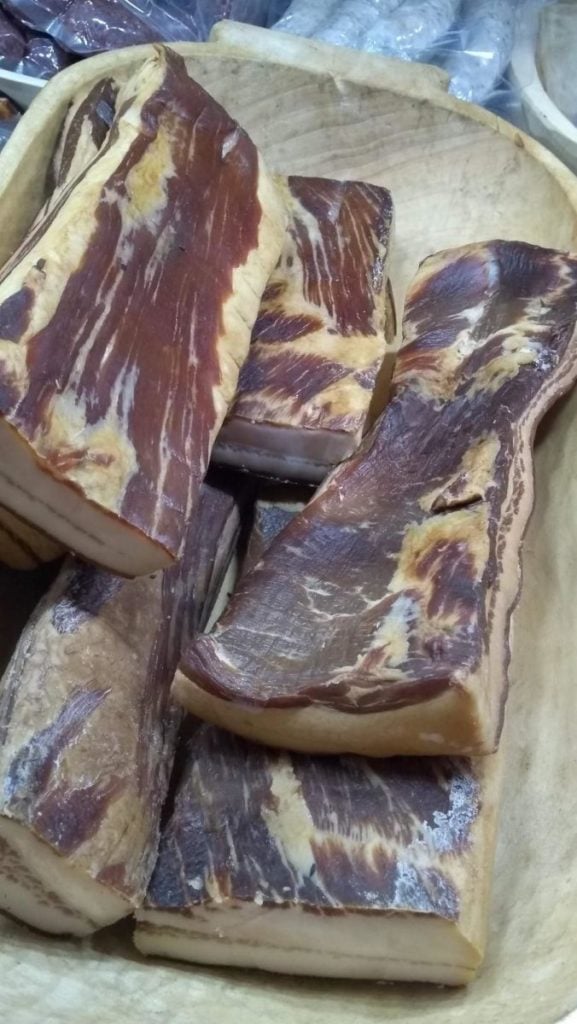

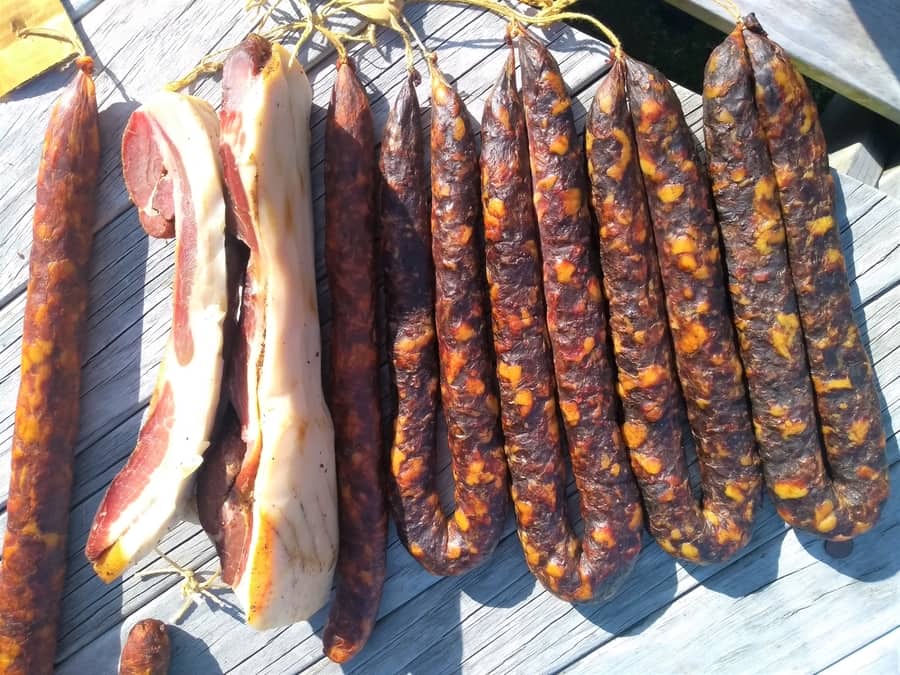
So, with this dry-cured/cold-smoked meat, you have something that has lost over 30-40% of its weight from drying/smoking—in effect, this has preserved the meat long term (so it can last months). This applies to most pork and red meats.
However, cold-smoked salmon can sometimes have a 20% weight reduction if you buy it whole, which is about the right amount for salmon; it all depends on how dry it has been.
I have found that homemade cold smoked salmon dried over 30% can last a very long time.
Gravlax is salt-cured for 24 hours, and it generally lasts about a week until it gets a bit more of a fish smell. As the Scandinavians have done for thousands of years, you can leave it in salt for much longer, drawing out more moisture and inhibiting the bad bacteria’s ability to grow. In other forms and cultures, this is called salt fish.
The same applies to salt pork, salt fish, and salt beef. Salting involves putting chunks of meat in salt and leaving them for days. Then, it is dried out (this can be done in your regular fridge).
You see this type of meat hanging outside stores in certain cultures like the Caribbean since it has been fully preserved and can last years, they say.
Hot Smoked Meat, ie. Bacon, Chicken, Fish
Refrigerate? Yes
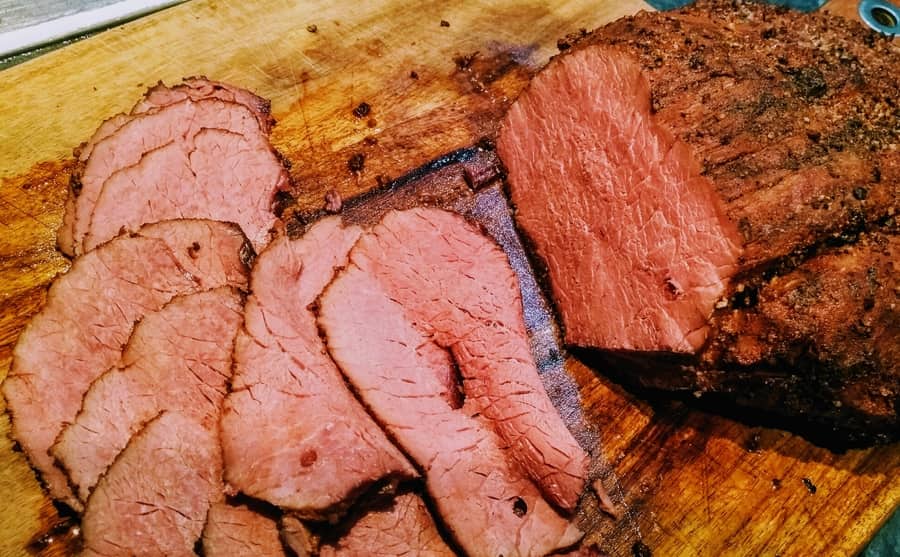
More hot-smoked bacon seems to be coming onto the market, and it’s also popular for making at home. This is because you can use your existing hot or low-and-slow smoker to smoke and cook the bacon simultaneously.
Folks then package it and freeze it until they want to cook it, so you just end up recooking it through frying or baking.
When you buy hot smoked salmon, it’s been cooked – so it’s ready to eat (more detail about whether cured meats need to be cooked) product (or if you make it at home). Once it’s made or the package has been opened, it lasts 7-10 days.
Golden Rule for If Food is Good to Eat
Smell it! Your nose has some evolutionary sensors built to detect whether something is edible. You can typically tell if it’s off with a good sniff!
Biltong/Jerky
Refrigerate? No
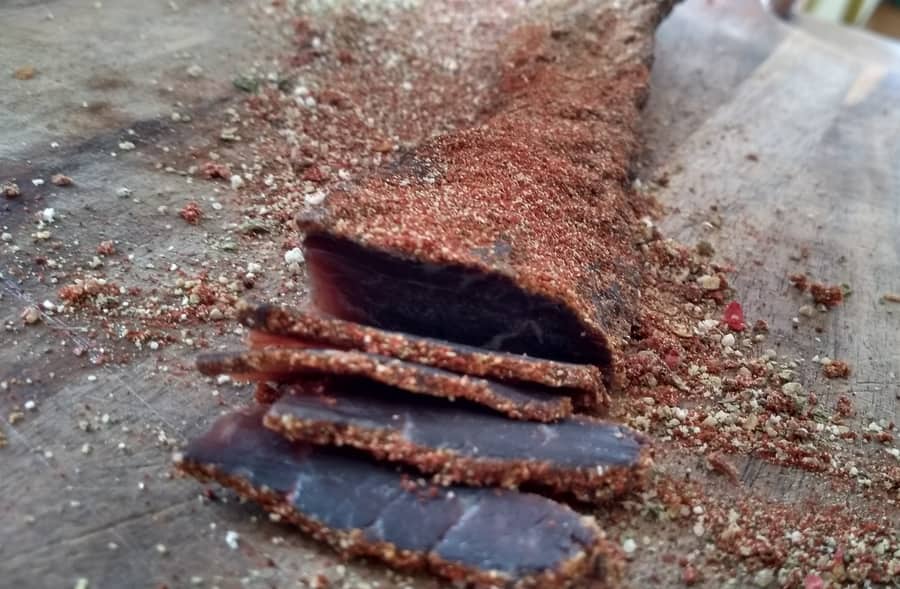
This stuff tends to dry out faster in the dry environment inside a fridge.
I love making jerky and biltong, it’s a brilliant high protein low-fat snack that doesn’t need refrigeration. This is because it has been dried to a point where it is preserved (salt, sugar, and/or vinegar help fortify the meat).
If you make or can get your hands on whole biltong or jerky chunks, they’re great for camping, hiking, or long road trips!
It will last weeks as well.
Dry Cured Salami
Refrigerate? Yes – in a cool place is ok if the salami is whole
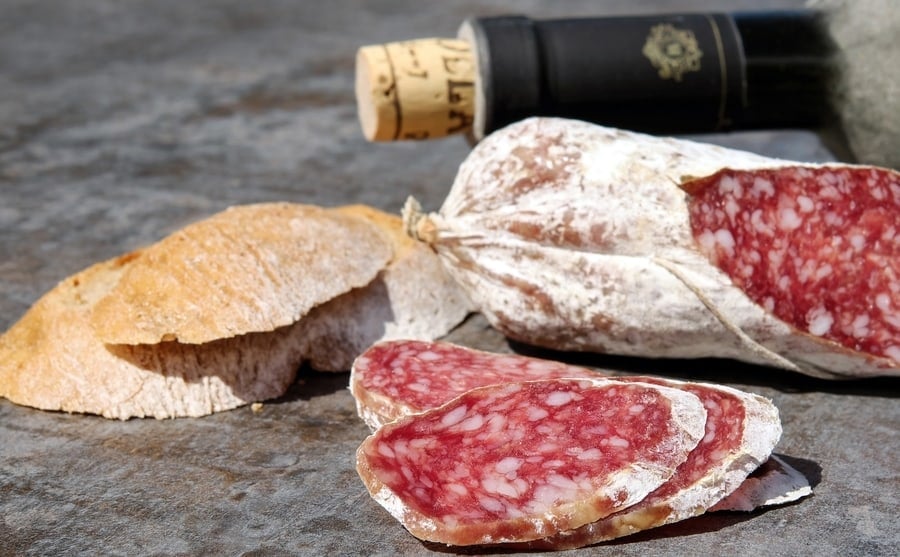
As mentioned, keep it whole, and you will have a much longer shelf life. It also means you can dry it out until it meets your preference. Heaps of dry-cured salami (cut and whole salami storage is also different) you will buy are fresh and can do with some drying out in my opinion ( the loss of moisture intensifies the flavors).
If it’s cool (under 16°C), it doesn’t need to be kept in the fridge. But I sometimes do stick it in, because I want it to dry out quicker in that humid environment.
The same goes for sliced salami. It gets more exposure, so it will not last as long. I like to keep it in an airtight container in the fridge.
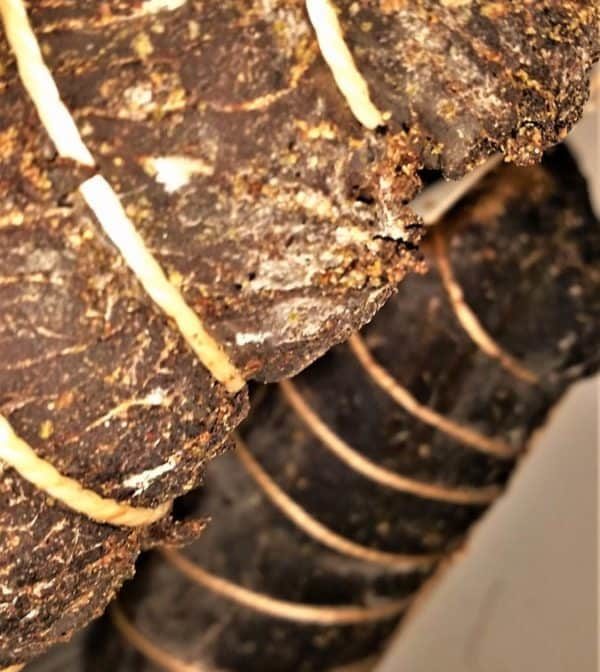
Whole Muscle Salumi ie. Prosciutto, Parma
Refrigerate? Yes – but it can be in a cool place
If whole, then as mentioned, it’s preserved already.
If purchased from the deli and it’s cut into wafer-thin slices ready for the charcuterie board (to help, I have a calculator for how much meat etc. per person I created), then you should keep it in the fridge – will last a few weeks but start to lose its special flavor once the air has its diminishing effect.
Cut Salumi ie. Prosciutto
Refrigerate? Yes
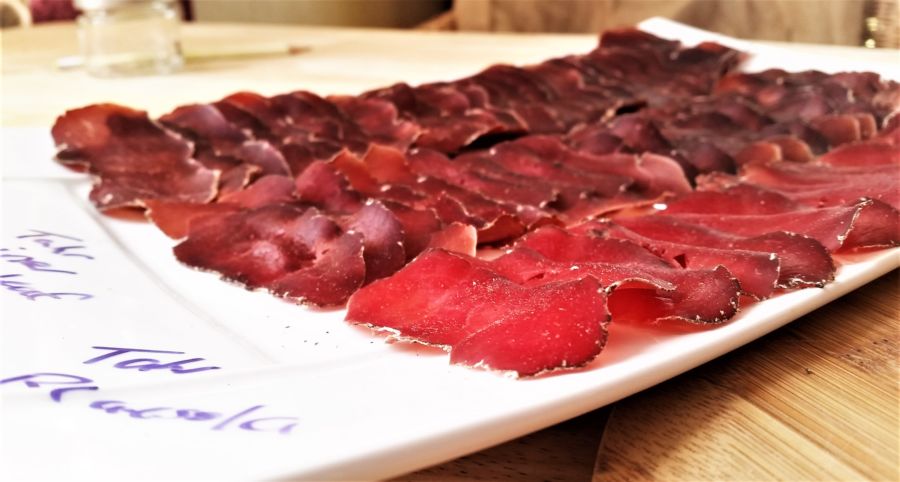
Air and oxygen have been mentioned to affect the prosciutto that has been cut. (Here are some prosciutto substitutes I wrote about.) You will probably only get 1 to 2 weeks stored in the fridge.
Pate/Rillettes/Confit
Refrigerate? Yes
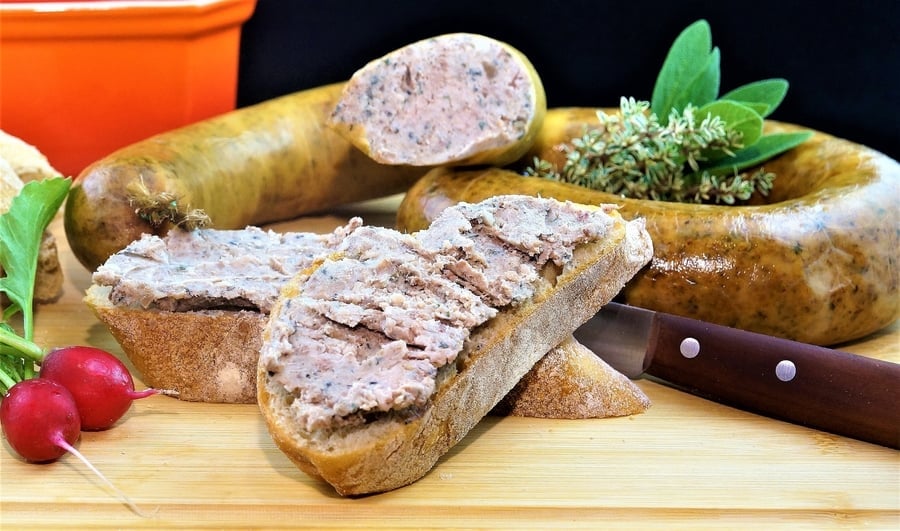
Most will be sealed with fat or butter, so the air or oxygen can’t affect it if you buy it. Keep in the fridge; once that seal has been broken, you probably won’t get much more than a week.
Unless it’s confit (cooked and stored in fat-duck confit, for instance), which I find with wild duck confit, can last 2-3 weeks. Please keep it in an airtight jar in the fridge. Hopefully, the fat will cover the meat in the jar.
Ham Whole or Cut
Refrigerate? Yes – whole in a damp bag or cut in an airtight container
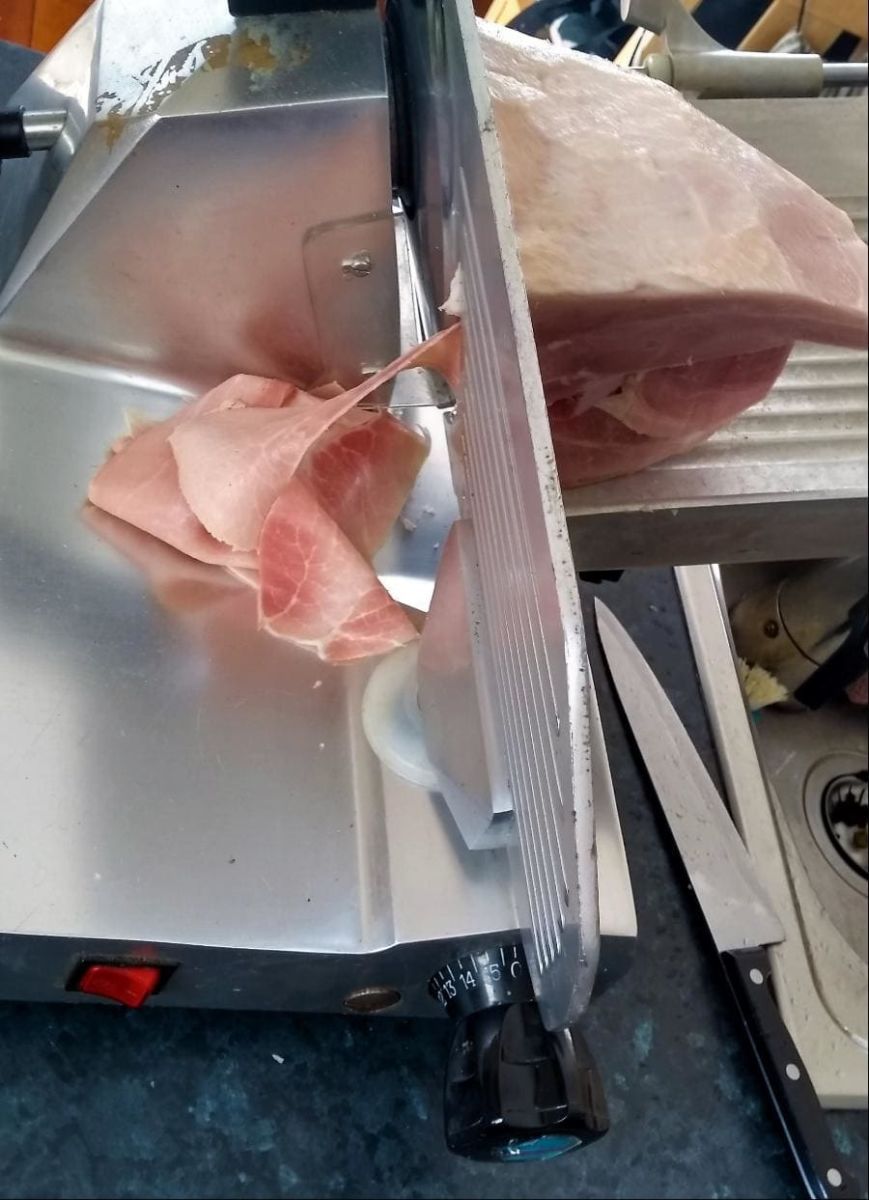
Country ham and whole ham have been salted and smoked; the ‘ham bag’ is useful to keep the ham from drying out too much in the low-humidity environment of the fridge.
I don’t have a ham bag, so I use a slightly wet tea towel – which does the same job.
Cut ham will again need to go into a container and will perish within a week or so—it will get a bit iffy.
Fridges Invented Recently, Many Years After Cured Meat
Most dry-cured meat and cold smoked meats were invented way before the refrigerator. In their whole form, they were used for months as a useful protein source on long ship voyages and to discover many parts of the world.
Due to food’s commercial nature, it sometimes gets bastardized. Bacon is especially injected with water to ‘bulk’ it up. Everyone has had the puddle of liquid from that cheap supermarket bacon.
How should I store sliced dry-cured meats to maintain freshness?
Store sliced dry-cured meats in an airtight container or paper bag to minimize exposure to oxygen. Keep in fridge, once the package is opened, it’s best to refrigerate the meat. Sliced meats spoil faster, so consume them within a week or two for optimal freshness.
Do whole dry-cured meats need refrigeration?
Whole dry-cured meats, like prosciutto or salami, do not necessarily need refrigeration if kept in a cool place (below 18-20°C or 64-68°F). However, refrigeration can further preserve their freshness, especially if they are vacuum-packed.
What’s the best way to store hot-smoked meats like bacon or salmon?
Hot-smoked meats should always be refrigerated. Once opened, they generally last 7-10 days. If you make hot-smoked bacon or salmon at home, refrigerate it to maintain freshness after smoking.
How long does biltong or jerky last without refrigeration?
iltong and jerky are dried to a point where they do not require refrigeration and can last for weeks. They are ideal snacks for camping or hiking, but if you prefer, you can refrigerate them to slow down drying.
What should I do if I buy whole cold-smoked meat like salmon or speck?
Whole cold-smoked meats should be refrigerated or kept in a cool place. These meats are preserved through drying and smoking so that they can last for months. If homemade, like cold-smoked salmon, ensure it has dried sufficiently to maintain its long shelf life.
If you’re still searching for questions, here are some other cured meats storage tips to check out.
I hope this helps; if you have any other tips, please comment!

Tom Mueller
For decades, immersed in studying, working, learning, and teaching the craft of meat curing, sharing the passion and showcasing the world of charcuterie and smoked meat. Read More
